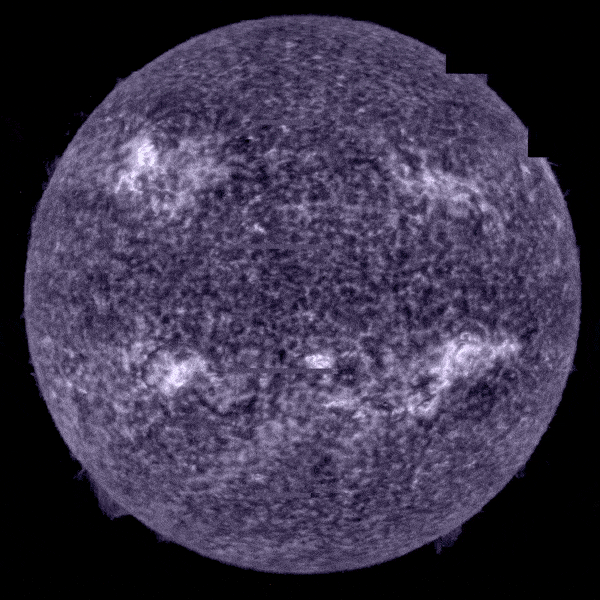Earlier this month, the European Space Agency (ESA) Solar Orbiter spacecraft in partnership with Nasacaptured the Sun in unprecedented detail as it crossed the “border” between the star king and the Earth.
One of the photos, taken by the Extreme Ultraviolet Imager (EUI) instrument, is the highest resolution image ever taken of the Sun’s complete disk, including the corona, its outer atmosphere.
publicity
Another image, taken by the Spectral Imaging of the Coronal Environment (SPICE) instrument, taken in the Lyman-beta wavelength of ultraviolet light that is emitted by hydrogen gas, represents the first such record of the Sun in 50 years.

Image of the Sun is formed by a mosaic containing 25 photos taken by the Solar Orbiter
The images were taken when Solar Orbiter was at a distance of approximately 75 million kilometers, halfway between our world and its parent star. The EUI camera takes pictures of such high spatial resolution that, at that distance, a mosaic of 25 individual images is needed to cover the entire Sun.
Taken one after the other, the photos that form the complete image were captured over a period of more than four hours, because each tile takes about 10 minutes, including the time for the spacecraft to point from one segment to the next.
In total, the final image contains over 83 million pixels in a 9148 x 9112 pixel grid. For comparison, this image has a resolution ten times better than a 4K TV screen can display.
Read more:
EUI captures images of the Sun at a wavelength of 17 nanometers, in the extreme ultraviolet region of the electromagnetic spectrum. This reveals the upper atmosphere of our star, the corona, which has a temperature of about a million degrees Celsius.
At the 2 o’clock (close to Earth image for scale) and 8 o’clock positions at the edges of the Sun, dark filaments can be seen projecting away from the surface. These “prominences” are prone to erupt, spewing massive amounts of coronal gas into space and creating solar storms.
According to ESA, SPICE was designed to trace the Sun’s atmospheric layers from the corona to a layer known as the chromosphere, close to the surface. The instrument does this by looking at the different wavelengths of extreme ultraviolet light coming from different atoms.
In the SPICE image sequence, purple corresponds to the gas hydrogen at a temperature of 10,000°C, blue to carbon at 32,000°C, green to oxygen at 320,000°C and yellow to neon at 630,000°C.
This will allow solar physicists to track the powerful eruptions taking place in the corona through the lower atmospheric layers. It will also allow them to study one of the most intriguing observations about the Sun: how the temperature rises through ascending atmospheric layers.
Normally, the temperature drops as you move away from a hot object. But above the sun, the corona reaches a million degrees Celsius, while the surface is only around 5000°C. Investigating this mystery is one of Solar Orbiter’s main scientific goals.
Have you watched our new videos on YouTube? Subscribe to our channel!
–


